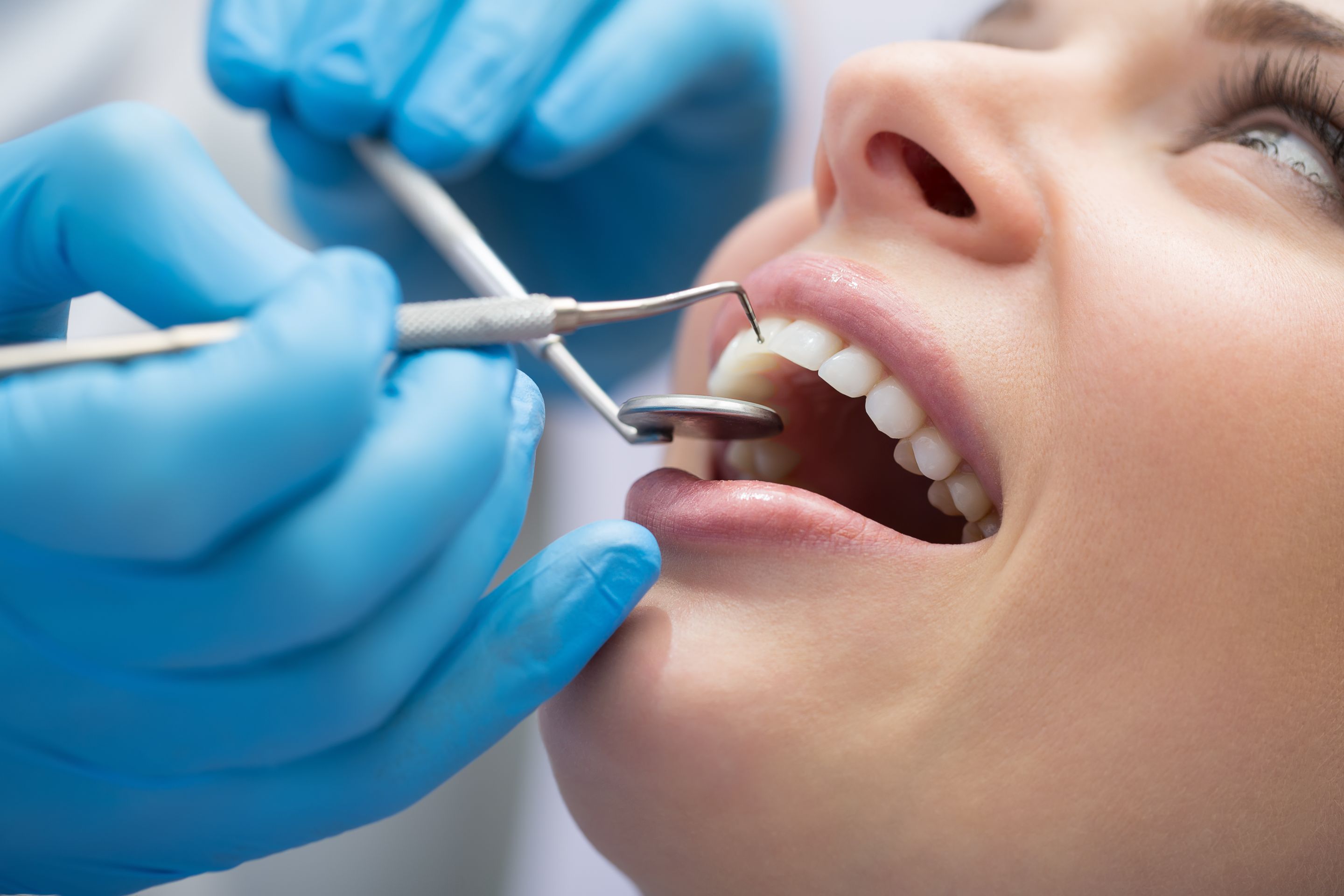Teeth Whitening Over The Counter and Dentist Office Treatments
Teeth Whitening, or dental bleaching, is a common cosmetic dentistry procedure. Adult teeth are not as white as "baby teeth". As people get older, the mineral content of the tooth will change. The enamel can become stained by food products, tobacco, or bacteria. Some antibiotics can have the side effect of staining teeth or making them less brilliant. The quest for whiter teeth is nothing new, as Ancient Romans used urine to whiten their teeth. Fortunately, modern products and procedures are much more palatable.
There are many teeth whitening products available currently. These products include whitening toothpastes, rinses, strips, and over the counter whitening gels. Some dentists use laser bleaching, while others send their patients home with an overnight whitening tray. These procedures are good for people who have otherwise healthy teeth that have turned yellow over time. Cosmetic whitening, however, is not for everyone.
People who have sensitive gums or teeth, receding gums, or problems with restorations should talk to a dentist first. No person with sensitivity to hydrogen peroxide should try a bleaching product. Prolonged exposure to these products can cause damage to tooth enamel. It is also not recommended for children under 16 or women who are pregnant or lactating. There is also reportedly a risk of tongue cancer associated with come whitening agents.
The quickest way to whiten your teeth is at the dentist's office. With an in office whitening procedure, the whitening agent is applied to the teeth directly. They are often used in combination with lasers, special lights, or heat. Results are apparent after only one treatment, and those last from 30 to 60 minutes. For dramatic and long term results, multiple appointments are needed. Although you will achieve faster and better results, this is the most expensive route to take.
Many people without the money or time for multiple visits to the dentist prefer to do their teeth whitening at home. Whitening toothpastes use chemical agents to gently polish the teeth and remove stains. While every toothpaste removes some stains, whitening products uses special chemicals. They do not contain bleach, and only remove surface stains. While effective, they only lighten the color of your teeth by one shade, while dental procedures can change make a difference of three to eight shades.
Other products include over the counter strips, gels, and rinses. Whitening gels are peroxide based. They are applies to the teeth with a small brush twice a day for 14 days. Results last for about 4 months. Whitening strips are also coated with a peroxide based gel. They are virtually invisible, and are applied for thirty minutes twice a day for 14 days with similar results as those that are achieved with the brush on gels. Whitening rinses freshen the breath while whitening the teeth. You simply swish the rinse around in your mouth for 60 seconds twice a day prior to brushing Because of the limited amount of contact the teeth have with the whitening agent, they are not as effective.
The effects of teeth whitening techniques are not permanent. If the patient does not change the behaviors that cause their teeth to rapidly discolor, then the effects will begin to fade fairly quickly. Contact with certain foods and beverages are known to cause tooth discoloration. Smoking and chewing tobacco products will also quickly discolor the teeth. If you are not ready to make these changes, then investing in having your teeth whitened is not a good idea. While the immediate results might be impressive, you will be disappointed with your long term results. And while the less expensive over the counter treatments work, they are not close to being as effective, nor are the results as long lasting, as with professional dentist office procedures.
Category: Doctor - Dentist
Related Articles
- Find a Good Dentist Near Me
- Want To Find A Dentist Its A Bit Like Finding A Mate
- Trench Mouth The Mouth Disease You Do Not Want To Ignore
- How Often Should I Visit A Dentist and Is It Important
- How to Find a Dentist thats Right for you
Business News
Popular Posts
- Universal Pursuit of Happiness - Wisdom from World Religions
- Overcoming Ego and Self-Centeredness - Lessons from World Religions
- Transcending Materialism - Spiritual Practices from World Religions
- Overcoming Prejudice and Intolerance - Guidance from Global Faiths
- How Mind Balance Can Improve the Mindsets of Employees
- Interfaith Insights by 1WorldPeace - The Top 100 Universal Beliefs in Global Spirituality
- Bridging Beliefs - Finding Common Ground in Love and Respect
- The SmartGuy Vision - A United Future Through Interfaith Love and Respect
- A Cautionary Vision - The Grim Future of a Divided World Without Love and Balance
- A Tapestry of Faiths - Exploring the Common Threads in World Religions
- Fostering Harmony Among Christianity Islam Buddhism Hinduism and Judaism
- Preparing Kids for Adulthood - 15 Vital Skills They Wont Learn in School
- Navigating Diversity - Jerusalem's Tactical Approach to Interfaith Harmony
- Clearing Mental Plaque: The Path to Enhanced Communication and Divine Connection
- Why Return to Jesus Christ and the Church
- Top 50 Ways to Live Longer
- Adventurous Romance -The Key to Enhancing Relationship Chemistry
- Pork Tenderloin with Mustard Cream Sauce
- Navigating Technology and Media for Optimal Mental Well-Being
- Understanding the Link Between Mental Health and Substance Abuse
